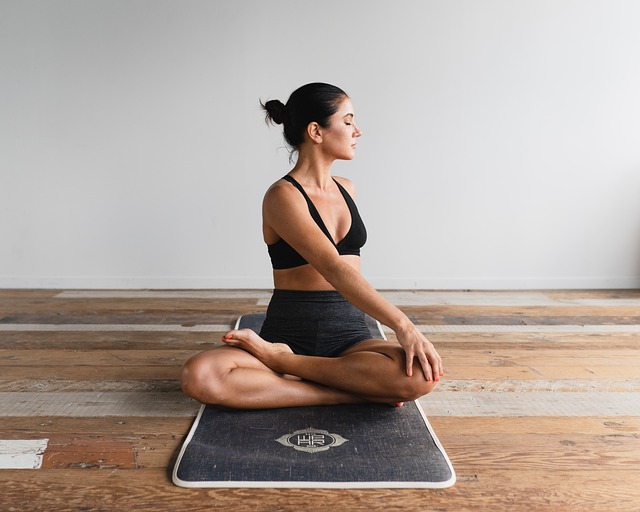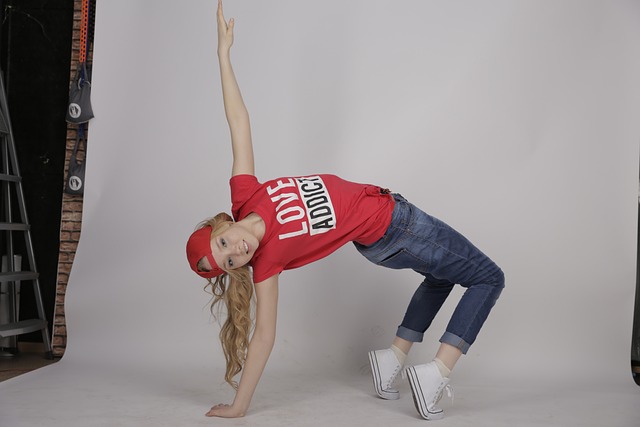There are two different types of stretches you can do to increase your flexibility. Static and Ballistic Stretching. Flexibility is one of the five health-related components of fitness and a vital component of functional health. It is measured as the range of motion you have around a specific joint.
If your range of motion is restricted for any reason, it becomes more difficult to do daily activities like bending over to pick stuff off the floor or raising your arms overhead from the high shelves. Poor flexibility has also been associated with a higher risk of falling and resulting injuries, emphasizing the need to maintain a good range of motion throughout the aging process.

There are numerous methods for maintaining and increasing range of motion, including yoga, Pilates, specific types of weight training, and even foam rolling, but traditional stretching remains a go-to approach for working on flexibility. The catch is that there are many different types of stretching, and as research in the field continues, as well as whether certain types of stretching are appropriate for different times or activities.
What may surprise you is that two stretching strategies that have long been considered go-to approaches for flexibility training have begun to fade. This isn’t to say that neither strategy has a place or time, but rather that you need to think carefully about how to apply them to your personal training and when they’re most appropriate to employ. Here’s everything you need to know about static and ballistic stretching.
Basics of Static Stretching
Most people think of static stretching when they hear the phrase “stretching.” You enter a stretch, hold it for 10 to 60 seconds, then release it before going on to the next stretch.
When executing a standing quadriceps stretch, for example, you bend one knee, elevate your foot off the ground, grab the elevated foot with your opposite hand, and drag your heel toward your buttocks, holding the posture until you feel a wonderful stretch down the thigh of your lifted leg.
Static stretching is not intrinsically harmful, and it is an efficient strategy to maintain and improve the range of motion. However, contrary to popular opinion, engaging in static stretching before an exercise does not always lessen the probability of injury.
Furthermore, according to a 2014 study published in The Journal of Strength and Conditioning Research, static stretching before exercise may reduce performance while participating in strength training or other forms of exercise that demand explosive force, such as sprinting or jumping. As a result, a pre-workout static stretch is less than ideal for many demographics, particularly athletes and others who rely on power-based training.
We are not saying that static stretching does not have a role; it does but for the most benefit—namely, to maintain or enhance range of motion—static stretching should be performed after an exercise or as its own program following a short warm-up. In either case, this method allows you to work on flexibility while your muscles are warm and malleable, better preparing you to move to the end (or past!) your regular range of motion in a controlled and safe manner.
Ballistic Stretching Fundamentals
Ballistic stretching is another type of stretching that has been questioned due to the possibility of harm. Chances are you’ve tried ballistic stretching at some point in your life. Consider your early school days for a moment. If your physical education teacher ever led you through the “butterfly stretch,” you most likely did it ballistically.
While the practice has begun to alter, many physical education teachers used to instruct their students to:
- Sit on the floor and put the soles of their feet together.
- Extend your knees so that your outer thighs reach for the ground.
- Draw your heels as close to your torso as possible.
- Stretch your groin by bouncing your knees up and down like a butterfly flapping its wings.
The last cue, “bounce your knees up and down,” is what distinguishes this stretch as a ballistic stretch.
In essence, ballistic stretching is a type of stretching in which you use velocity, force, or gravity to continually push your body above its natural range of motion. On the surface, it appears to be beneficial, and sportsmen and dancers do utilize it to improve their flexibility. However, it is regarded as a more complex practice best left to high-level athletes with the necessary control and finesse to engage in ballistic motions without risking injury.
Because of the ballistic nature of the procedure, there are few meaningful advantages for the ordinary exerciser (as compared to other forms of stretching) and a higher comparative risk of muscle pulls or tears. It should be used very sparingly in a standard stretching practice.
Active Stretching Is Not the Same as Ballistic Stretching
However, it is vital to emphasize that active stretching and ballistic stretching are not the same things. These two types of stretching are sometimes mixed up because neither involves holding stretches for an extended amount of time.
However, there are significant discrepancies between the methodologies. Arm circles, leg swings, deep walking lunges, and deep air squats are all considered active stretches. These stretches are ideal for before your workout.
Active stretching differs from ballistic stretching in that no jumping or jerking motions are used. Instead, you simply push your body to its limits in a controlled and continuous manner.
Active stretching has increased in popularity because studies, such as the one listed above, show that it is more successful than static stretching at preparing your body for activity, boosting performance, and minimizing the probability of injury. This is especially true if you’re doing active stretches that resemble the motions you’ll be doing during your workout. Doing high knees and butt kicks, for example, preparatory to a jogging exercise.
Ballistic Stretching vs. Static Stretching
When comparing static and ballistic stretching, keep in mind that each is good for distinct situations and populations. Because of its controlled nature and effectiveness at maintaining and improving range of motion, static stretching can be beneficial for all persons. This is including older adults, especially when practiced after an exercise routine.
Due to its more complex methodology, ballistic stretching is not appropriate for all groups. As a result, it should only be used by highly accomplished athletes or dancers or those who have had plenty of practice practicing the procedure safely. If you’re not sure whether you fit into the category, continue with static stretching rather than ballistic stretching.
Recommended Practices to increase flexibility
Adults should engage in at least two to three bouts of flexibility training each week. These sessions should target all of your major muscle groups and take your joints through their complete range of motion.
Here are a few safe and effective ideas:
As part of your warm-up regimen, perform active stretching before aerobic and weight exercises. Choose active stretches that train the same muscle groups and joints as your aerobic or strength exercise. If you intend to execute weighted squats, for example, a series of deep air squats can assist in preparing your body for the weighted version.
Stretch passively after your cardio or strength-training activities. Concentrate on all of your key joints and muscle groups. Each stretch should be held for 10 – 30 seconds. Repeat each stretch for a total of 60 seconds per joint and muscle group. For example, if you hold a quad stretch for 30 seconds, then release it. Repeat it twice for a total of 60 seconds. A typical total-body stretching program that targets all main muscle groups should take about 10 minutes.

There should be some discomfort at the end of your range of motion, but it should not be unpleasant. If you feel any discomfort, take a step back.
Yoga, tai chi, Pilates, or barre are examples of exercises that include flexibility training.
Ballistic stretching should be avoided unless you are a highly experienced athlete. If you are a performer with experience that allows you to do the procedure safely. When in doubt, stick to static and active stretching.
To Conclude
The majority of people simply do not stretch enough. If you’re unsure when and how to incorporate stretching into your hectic schedule, keep it easy.
Begin by attempting to get the prescribed 150 minutes of moderate-intensity cardiovascular activity per week. Add 10 minutes of static stretching after two 20- or 30-minute aerobic sessions per day. You may get started by reading a simple guide.

